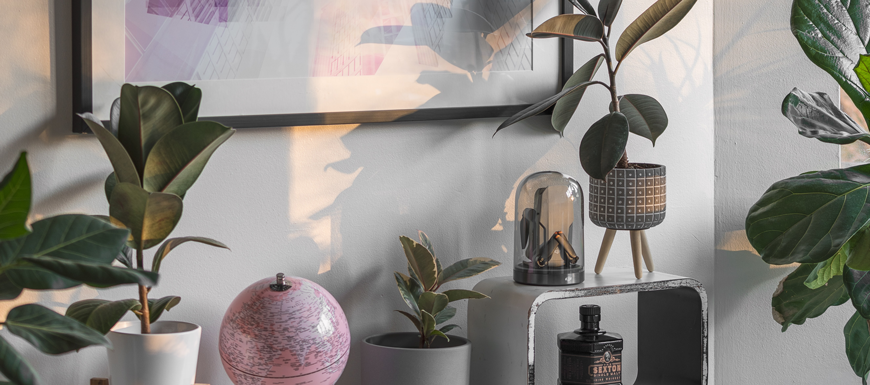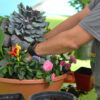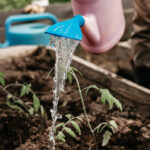What are rubber plants you may ask? These houseplants are making a comeback and becoming extremely popular! With many varieties to pick from these houseplants can suit any style of home. It was hard to narrow it down but we’ve selected a few of our top picks to share with you the different styles and how to care for them when they make it to your home. Lucky for you they are super easy to grow, and we love some pretty unique varieties to add to your houseplant collection.
Belize, Melany, Lemon Gem and Burgundy rubber plants are all favorites of ours. The Belize will showcase pink, cream and green leaves that will become brighter with more light (afternoon sun can be too extreme for rubber plants). Low-light areas may cause the leaves to be greener. If you are hoping for the traditional burgundy leaf, Melany and the Burgundy rubber plants are for you. Melany has a finer texture with smaller leaves and slightly greener leaves and the Burgundy has larger deeper leaves. Low light levels are allowed for these varieties but keep in mind too little light could cause the plant to get leggy. If you’re looking for something a little different then check out Lemon Gem. This bright green leaf has a lime margin, which will become brighter with increased light levels.
After you have brought home your beauty you may be wondering, what to do with it? Plants from the nursery usually will come home in the grower pot. If you were planning on potting into a decorative pot, or if it is too overgrown for the pot, then replant it at the time of bringing it home. Use an all-purpose mix like our Promix soil for the correct soil. Don’t use soils that have moisture-holding capabilities, and if there is fertilizer, only use a limited amount. Place rubber plants in partial sun to indirect bright light. The afternoon sun may burn the leaves. Rubber plants prefer moist soils, however, waiting to water the plants until the top two inches of soil are dry is best. Water the plant to the point when the water starts draining out of the bottom of the pot. Use Jacks Houseplant Special to fertilize rubber plants every two weeks during the spring and summer months.
Rubber plants can grow tall, that is their natural habit. To keep them at a size that is better suited to fit your house, pruning is a must! Pruning can take place any time of the year, but the best time is late spring and summer. Try to not take off more than 1/2 of your total plant height, but if you must prune more off, adequate foliage must remain on the plant. Select which stems you’re planning on pruning and keep in mind every location you prune will produce branching. Use a sharp bypass pruner and cut just above a node (where the leaf meets the stem). The plant may look quite thin when you have finished but with time, it will be big and beautiful.
If you don’t have a rubber plant yet, now is the time to get one! Stop in and add one to your collection of houseplants!



